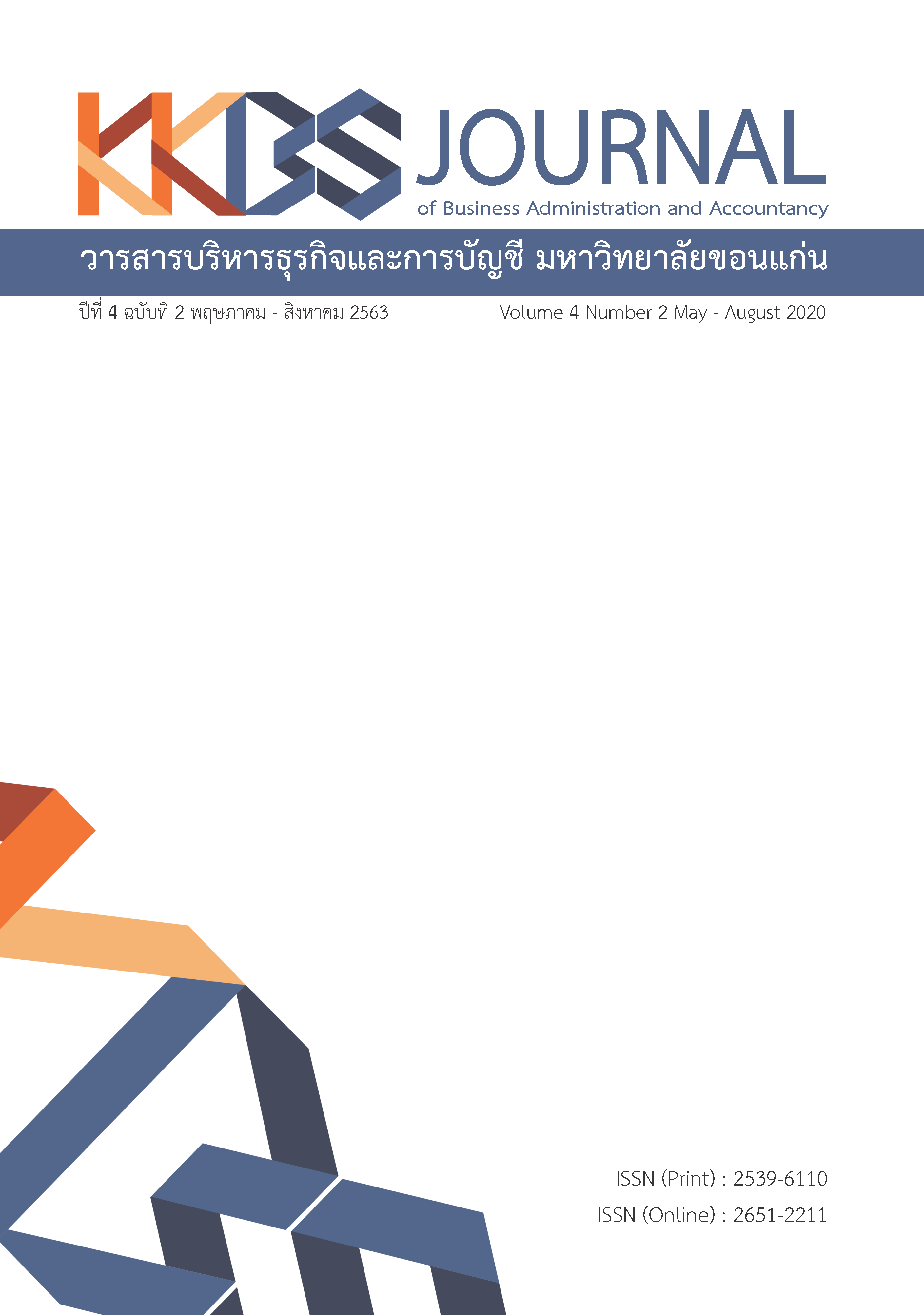Country Image and Destination Image: Western tourists’ perspective
Main Article Content
Abstract
Image plays an important role in the tourists’ decision to travel. The aim of this study was to investigate relationship between country image and destination image. A quantitative approach used to collect the data with questionnaire from 409 western tourists in Phuket. Exploratory factor analysis, confirmatory factor analysis and simple regression analysis were used. The results indicated that there were 4 factors and 24 indicators for image of tourism. The country image was two factors; people characteristic and country characteristic. The destination image was two; cognitive image and affective image. Further analysis showed that there was a significant positive correlation between country image and destination image.
Article Details
The articles published in the journals are the authors' opinions, not the opinion of the editorial team or administrative staff. The articles published is copyright of the Journal of Business Administration and Accounting, Khon Kaen University.
References
Bagozzi, R.P. & Yi, Y. (1988). On the evaluation of structural equation models. Journal of the Academy of Marketing Science, 16(1), 74-94.
Browne, M.W. & Cudeck, R. (1993). Alternative ways of assessing model fit. In: Bollen K.A. & Long J.S., ed. pp.111-135. Testing structural equation models. Beverly Hills, CA: Sage.
Chompucum, P. (2018). The challenge to create Bangkok smart destination image and loyalty. KKBS Journal of Business Administration and Accountancy, 2(1), 43-53.
Dedeoglu, B.B. (2019). Shaping tourists' destination quality perception and loyalty through destination country image: The importance of involvement and perceived value. Tourism Management Perspectives, 29, 105-117.
Department of Tourism in Thailand. (2019). Tourists’ statistic. Bangkok: Department of Tourism in Thailand. (In Thai)
Department of Tourism in Thailand. (2020). Tourists’ statistic. Bangkok: Department of Tourism in Thailand. (In Thai)
Elliot, S., Papadopoulos, N. & Kim, S.S. (2011). An integrative model of place image: Exploring relationships between destination, product, and country images. Journal of Travel Research, 50(5), 520-534.
Fornell, C. & Larcker, D.F. (1981). Eveluating structural equation models with unobservable variables and measure. Journal of Marketing Research, 18, 39-50.
Frias, D.M., Rodriguez, M.A., Castaneda, J.A., Sabiote, C.M. & Buhalis, D. (2012). The formation of a tourist destination's image via information sources: The moderating effect of culture. International Journal of Tourism Research, 14(5), 437-450.
Hair et al. (2010). Multivariate data analysis with reading. 4th ed. Upper Saddle River, NJ.: Prentice-Hall.
Henkel et al. (2006). Thailand as a tourist destination: Perceptions of international visitors and Thai residents. Asia Pacific Journal of Tourism Research, 11(3), 269-287.
Lee, R. & Lockshin, L. (2012). Reverse country-of-origin effects of product perceptions on destination image. Journal of Travel Research, 51(4), 502-511.
Lee, S.J. & Bai, B. (2016). Influence of popular culture on special interest tourists' destination image. Tourism Management, 52, 161-169.
Martinez, S.C. & Alvarez, M.D. (2010). Country versus destination image in a developing country. Journal of Travel & Tourism Marketing, 27(7), 748-764.
McDowall, S. & Choi, Y. (2010). Thailand's destination image through the eyes of its citizens. International Journal of Hospitality & Tourism Administration, 11(3), 255-274.
Mossberg, L. & Kleppe, I.A. (2005). Country and destination image–different or similar image concepts? The Service Industries Journal, 25(4), 493-503.
Nadeau et al.. (2008). Destination in a country image context. Annals of Tourism Research, 35(1), 84-106.
Palau-Saumell et al. (2016). Examining how country image influences destination image in a behavioral intentions model: The cases of Lloret De Mar (Spain) and Cancun (Mexico). Journal of Travel & Tourism Marketing, 33(7), 949-965.
Souiden, N., Ladhari, R. & Chiadmi, N.E. (2017). Destination personality and destination image. Journal of Hospitality and Tourism Management, 32, 54-70.
Su, L., Hsu, M.K. & Swanson, S. (2017). The effect of tourist relationship perception on destination loyalty at a world heritage site in China: the mediating role of overall destination satisfaction and trust. Journal of Hospitality and Tourism Research, 41(2), 180-210.
Tavitiyaman, P. & Qu, H. (2013). Destination image and behavior intention of travelers to Thailand: The moderating effect of perceived risk. Journal of Travel & Tourism Marketing, 30(3), 169-185.
The National Tourism Committee. (2017). The 2nd National Tourism Plan. Bangkok: Office of the Permanent Secretary of Ministry of Tourism and Sports. (In Thai)
Tourism Authority of Thailand. (2012). Thailand destination image in foreigner perspective. Bangkok: Tourism Authority of Thailand. (In Thai)
Wheaton et al. (1977). Assessing reliability and stability in panel models. Sociological Methodology, 8, 84-136.
Wu, C.-W. (2016). Destination loyalty modeling of the global tourism. Journal of Business Research, 69(6), 2213-2219.
Zeugner-Roth, K.P.& Zabkar, V. (2015). Bridging the gap between country and destination image: Assessing common facets and their predictive validity. Journal of Business Research, 68, 1844-1853.
Zhang, H., Wu, Y. & Buhalis, D. (2018). A model of perceived image, memorable tourism experiences and revisit intention. Journal of Destination Marketing & Management, 8, 326-336.
Zhang et al. (2016). The influence of destination-country image on prospective tourists’ visit intention: Testing three competing models. Asia Pacific Journal of Tourism Research, 21(7), 811-835.
Zhou, L. (2014). Online rural destination images: Tourism and rurality. Journal of Destination Marketing & Management, 3(4), 227-240.


